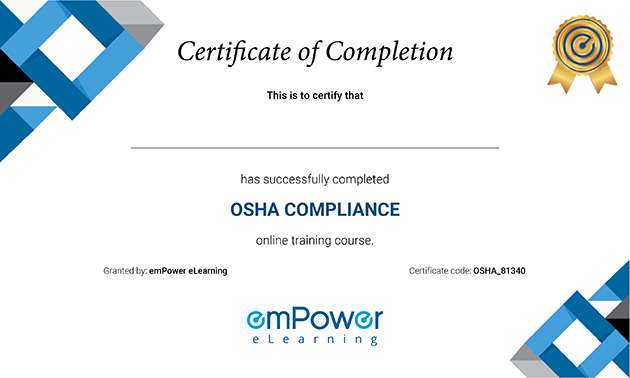Complete Sharps Injury Prevention Training Course
Stay Safe at Work: Sharps Injury Prevention Training for healthcare professionals. Learn, Prevent, Protect – Your Safety Matters

Our Client

































What is Sharp Injury Prevention
The revised bloodborne pathogen standards (BPS) focus heavily on preventing needle-stick and sharps injuries. This is to address the continuing high number of occupational injuries in healthcare. Also, Hepatitis C is a serious concern. Most occupational exposure to bloodborne pathogens occurs through sharps.
The objective of the sharps injury prevention training is to help you understand why the revised BPS standards prohibit the use of hazardous sharps and injuries. As you go through the sharps injury prevention training, you’ll learn why the standards recommend using SESIPs and prohibiting hazardous sharps and needle devices.
We’ll introduce you to the two concepts of injury prevention: the barrier precaution concept and the hierarchy of controls concept. You’ll also learn about work practices that can prevent sharps injury.
Lastly, you’ll learn about sharps injury prevention (SIP) programs. The sharps injury prevention training also covers the SIP program. In the SIP section, we’ll take a look at the components of an SIP program and how to run it effectively.
Course Description
| Category | OSHA |
| Course Name | Sharps Injury Prevention |
| Duration | 30 mins |
| Certificate Included | Yes |
| Languages | English |
| Course Type | Interactive online training |
| Narration | Yes |
| Format | LM-light, SCORM 1.2 |
| Supported Devices | Desktop/Laptop, Tablet, Phone |
| Last Updated | June 30, 2021 |
What you’ll learn
- What are sharps and needle-stick safety?
- Why is a sharps injury prevention program so important
- Preferred work practices for preventing sharps injuries
- Concepts of injury prevention strategies
- Essentials of a sharps Injury prevention program
Curriculum
- Introduction to the sharps injury prevention training
- What is sharps and needle-stick safety?
- What is an SIP program?
- Prohibition highlights of the Revised BPS standards
- How to launch an SIP Program?
- Steps to Launch your SIP Program
- Multi-component prevention approaches SIP Program
- Five operational processes of SIP Program
- Sharps injury prevention strategies
- Hierarchy of controls and shart safety
- Preferred work practices to prevent sharps injuries
- Components of SIP program
- Operational processes of SIP Program
- Availability of safe systems
- Summary of the sharps injury prevention training
Who Should Attend?
Any worker at risk of needle-stick or sharps injury, including doctors, nursing staff, lab workers and housekeepers.
Why emPower
100s of customers
- 14+ Years of experience in working with small to large businesses from different industries
- 95% customer retention
Customer Experience
- 24x7 dedicated support and toll free number
- 99%+ guaranteed uptime
Extremely Cost-effective
- As low as $0.99/user/yr
- We will match or better the price of your current LMS
Effective Courses
- Each course is 20-40 min long to ensure engagement with quizzes and certificate
- SCORM 1.2 Compliant
Implementation
- No setup costs
- We deploy your customized solution in less than 48 hours
Our Achievements
Here you can review some statistics about our Education Center
Start Your Certification Course Today
As per the universal precautions suggested by OSHA, you should maintain a barrier between yourself and blood (or other body fluids) regardless of the patient’s infection status. The universal precautions also focus on the careful handling and disposal of sharp devices and the use of personal protective practices. This includes the use of instruments, rather than fingers, to grasp needles, retract tissues, and load/unload needles and scalpels, and give verbal callouts when passing sharps.
Along with universal precautions, you should also use the hierarchy of control concept for injury prevention. Using strategies based on this concept can help reduce injuries due to recapping and disposal-related injuries. As per the hierarchy of control concept, you should prioritize practices that eliminate or reduce the use of needles and other sharps when possible.
To prevent sharps injuries, use proper handling techniques, dispose of sharp objects in designated containers, and wear protective gear. Stay vigilant and follow safety protocols to reduce the risk of harm.
Sharps injury protection involves following safety measures when handling sharp objects to prevent accidental injuries. Proper disposal, protective equipment, and adherence to protocols are key to safeguarding against harm.
In case of a sharps injury, wash the wound under running water, clean it with antiseptic, and apply a sterile dressing. Seek medical attention promptly to assess and manage potential risks.
A comprehensive sharps injury prevention program comprises training on safe handling, proper disposal methods, providing puncture-resistant containers, encouraging reporting, and continuous evaluation to ensure a safe work environment and minimize risks.

